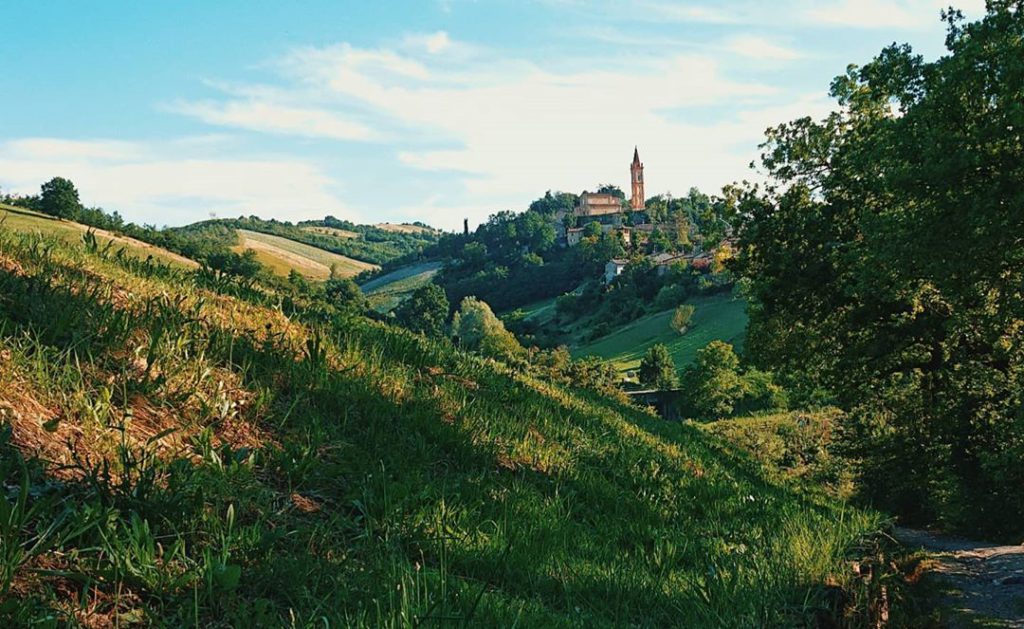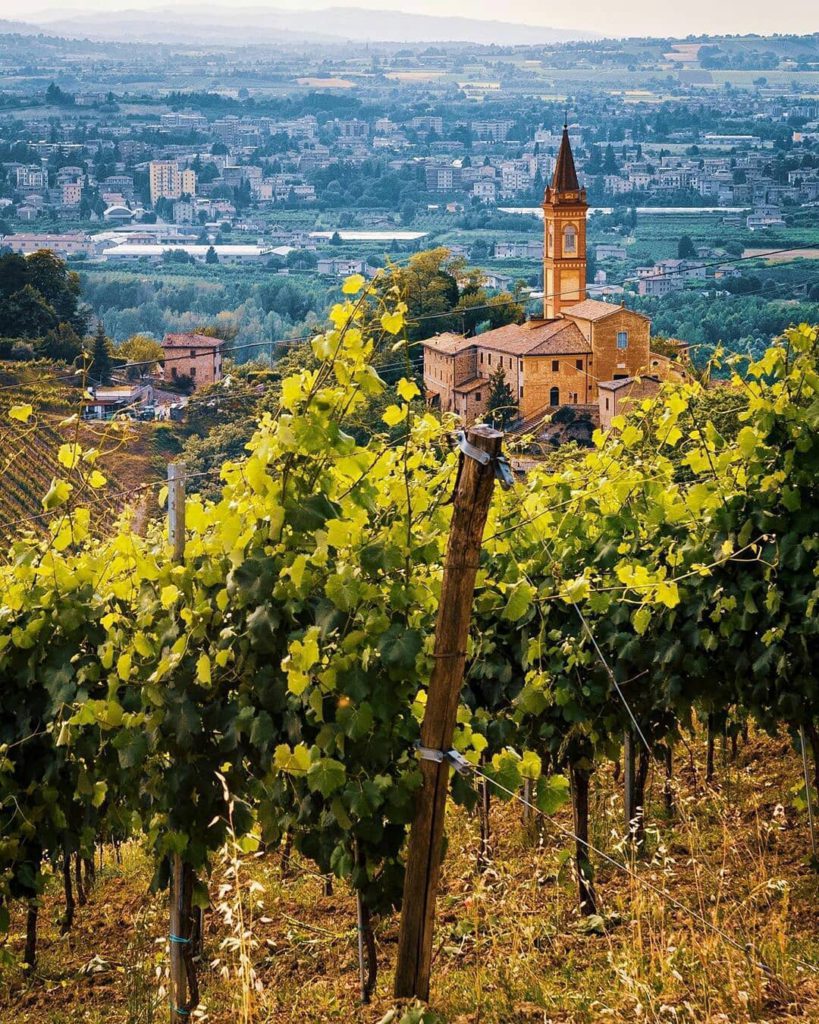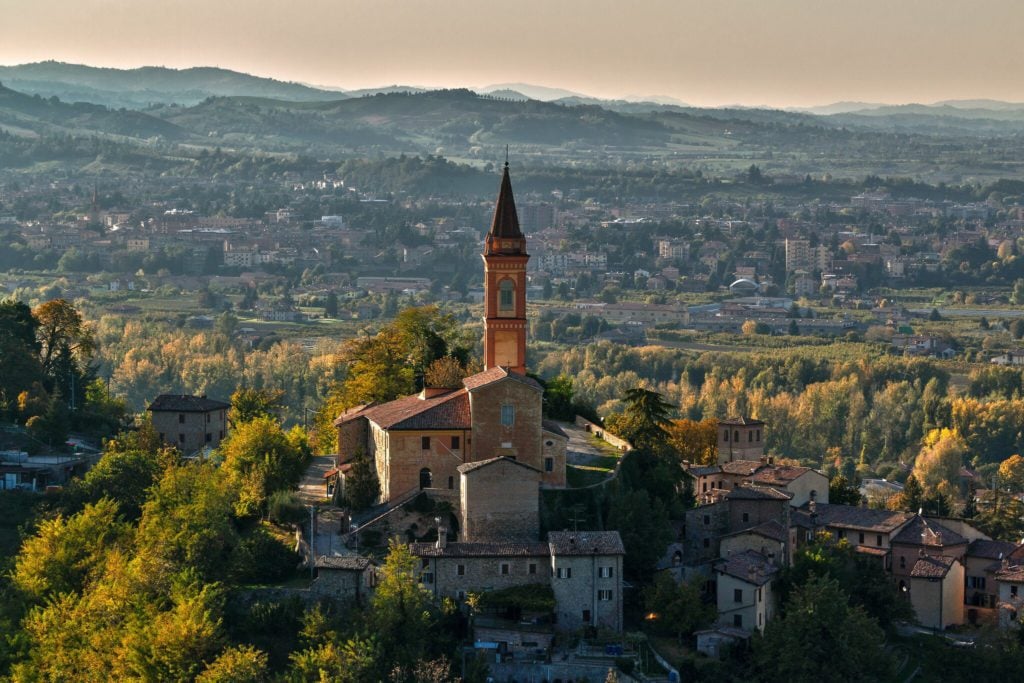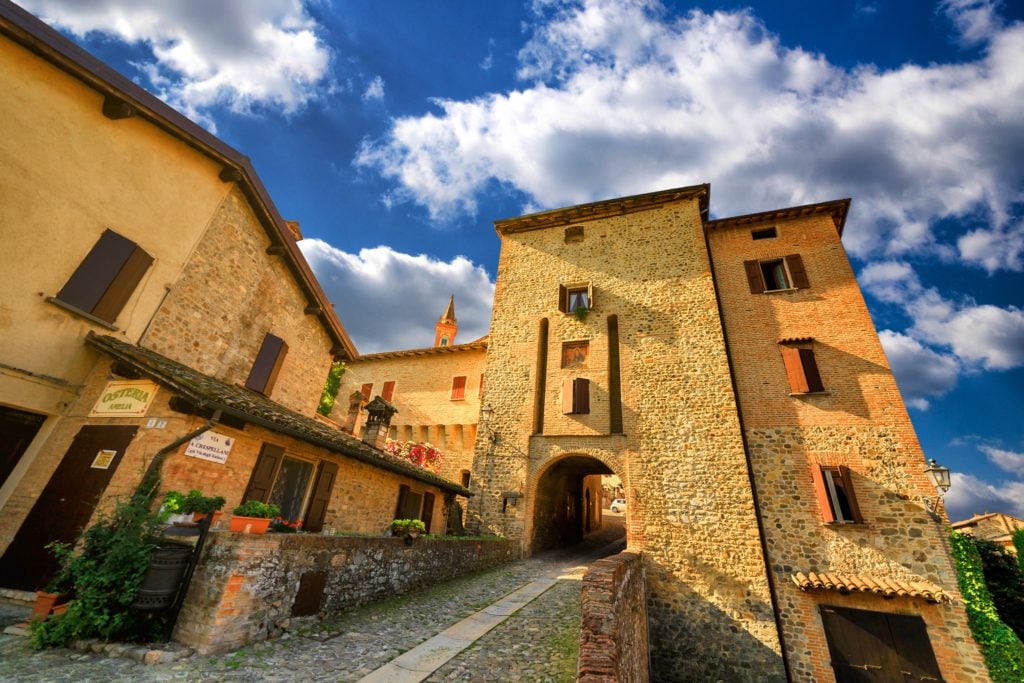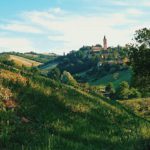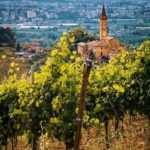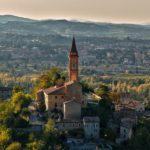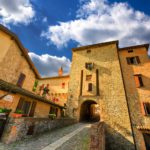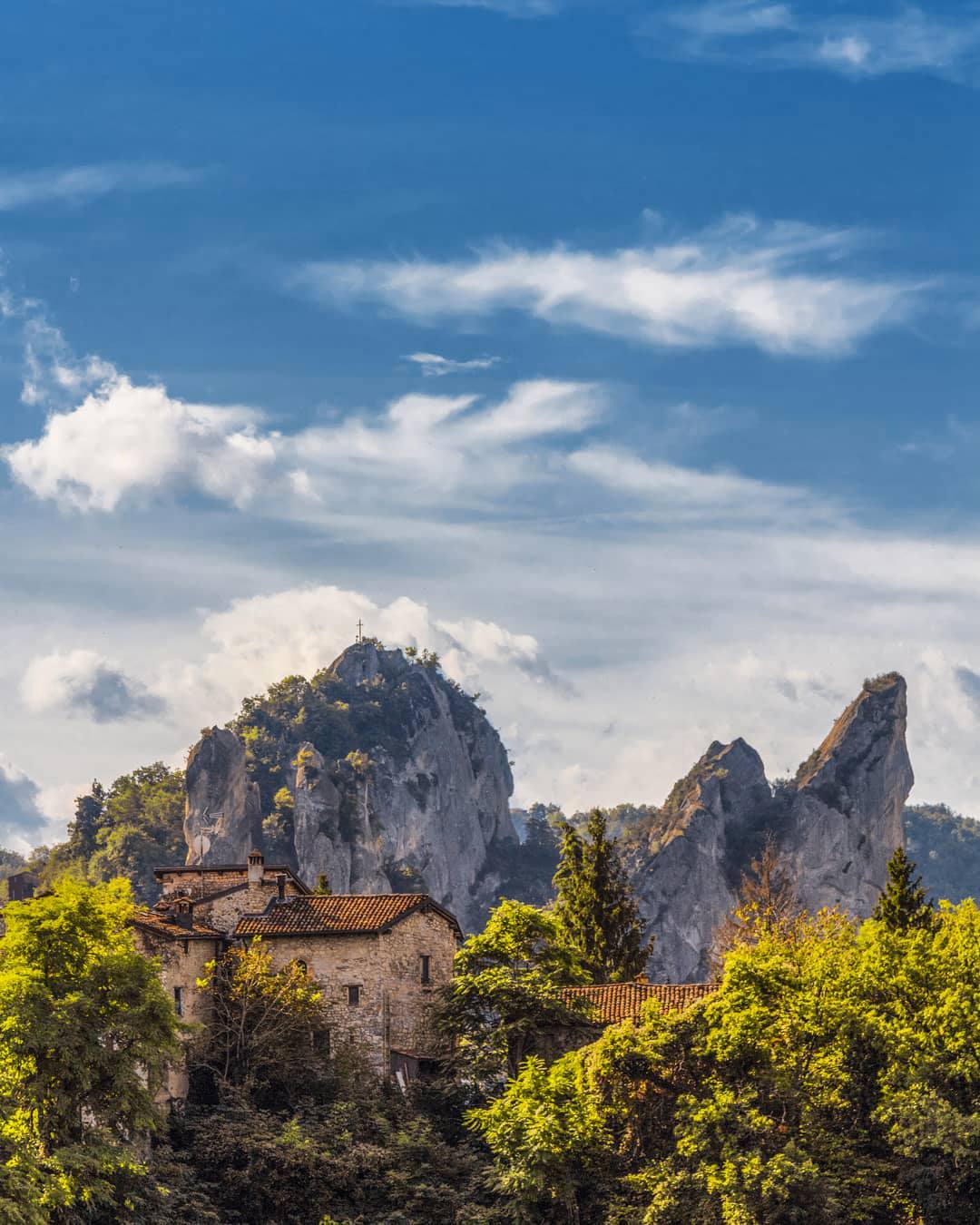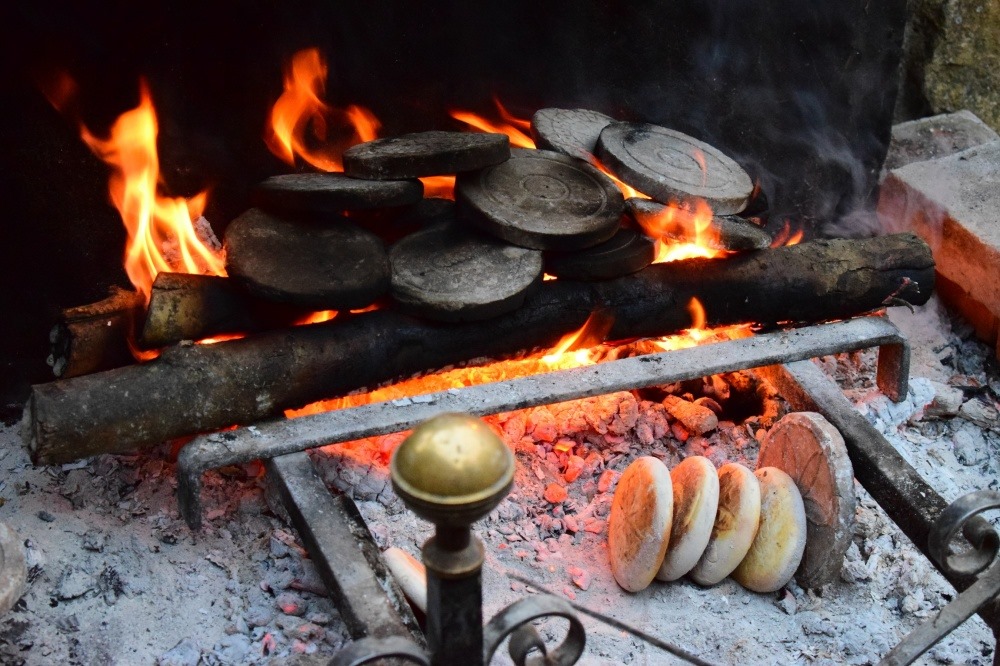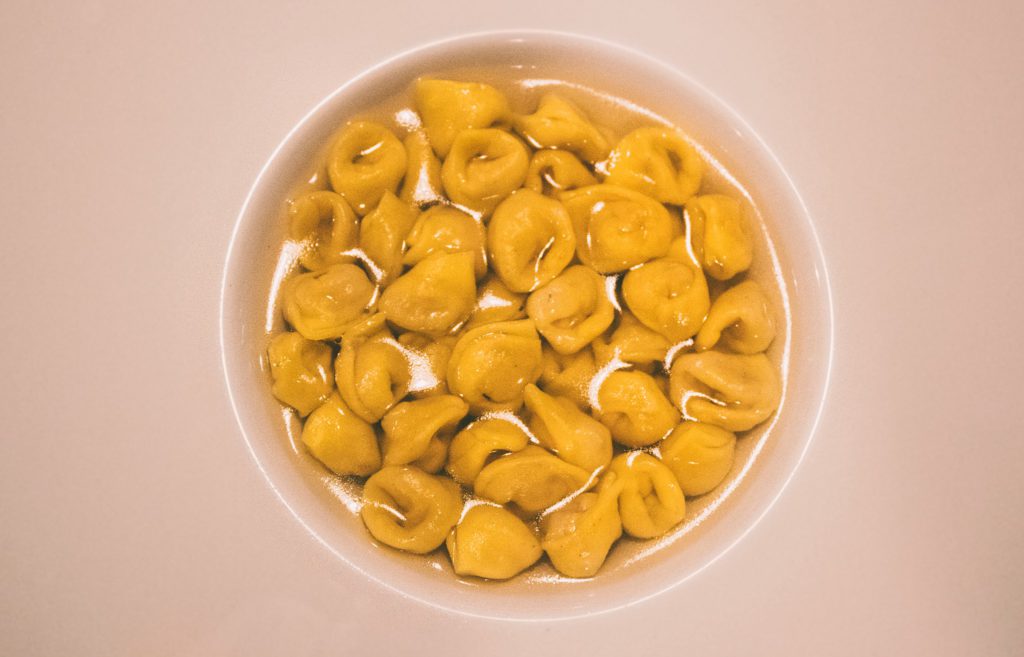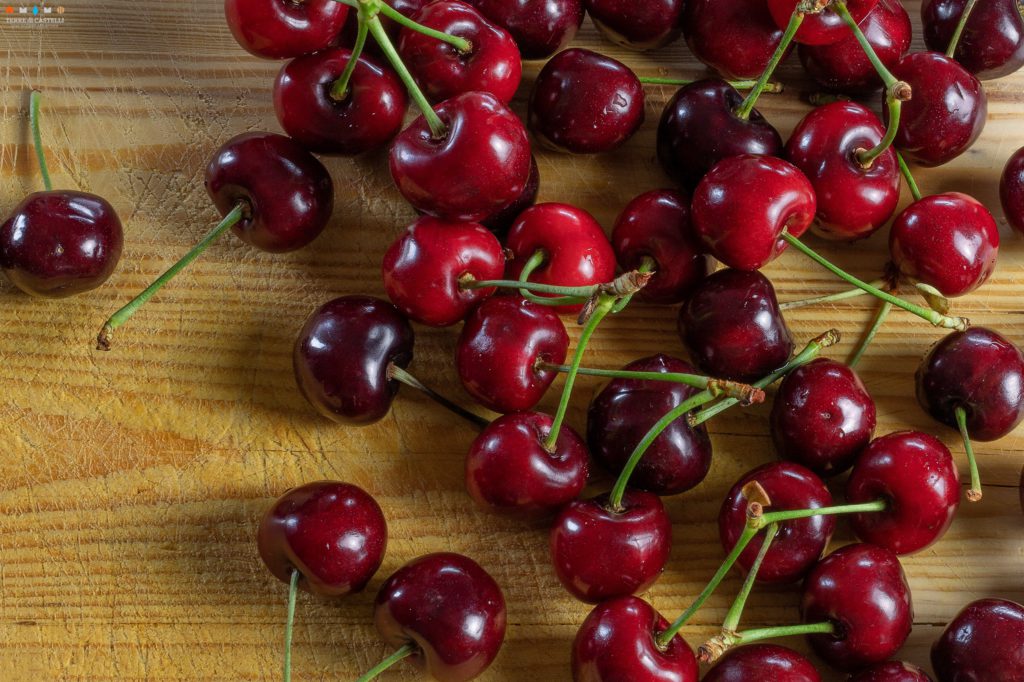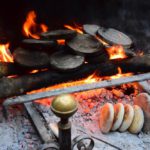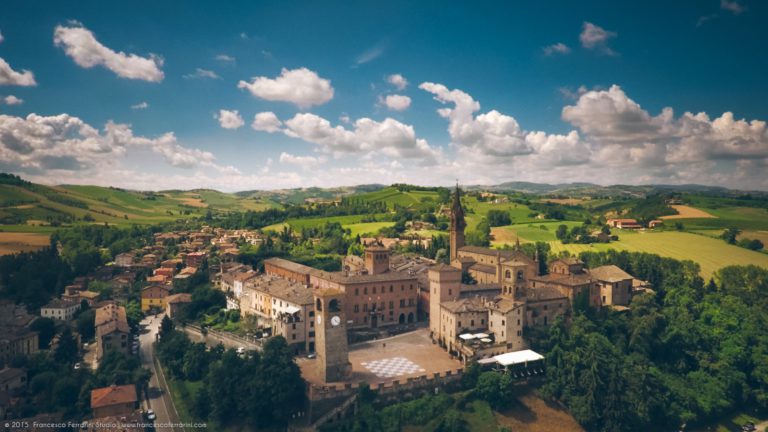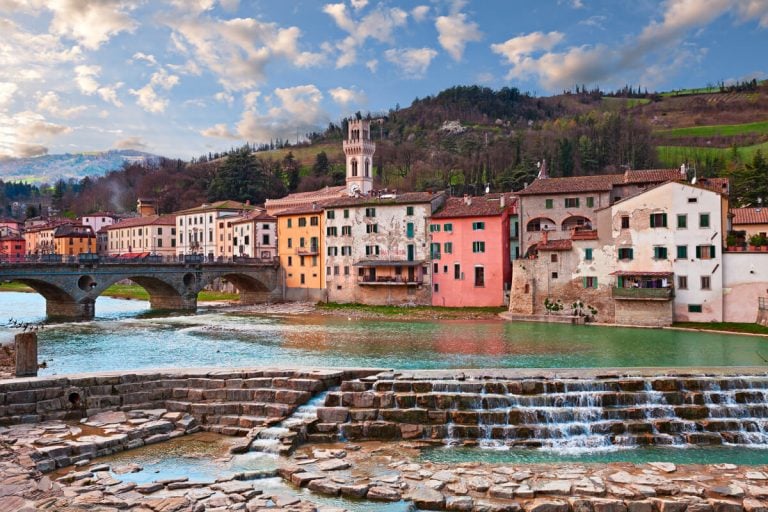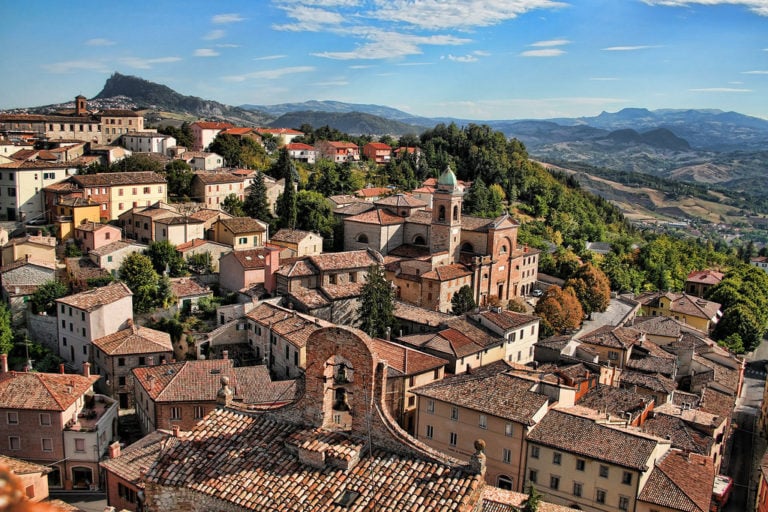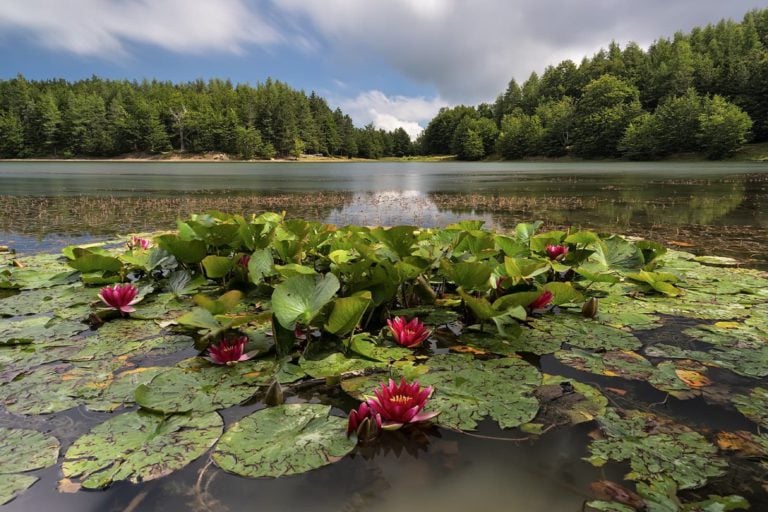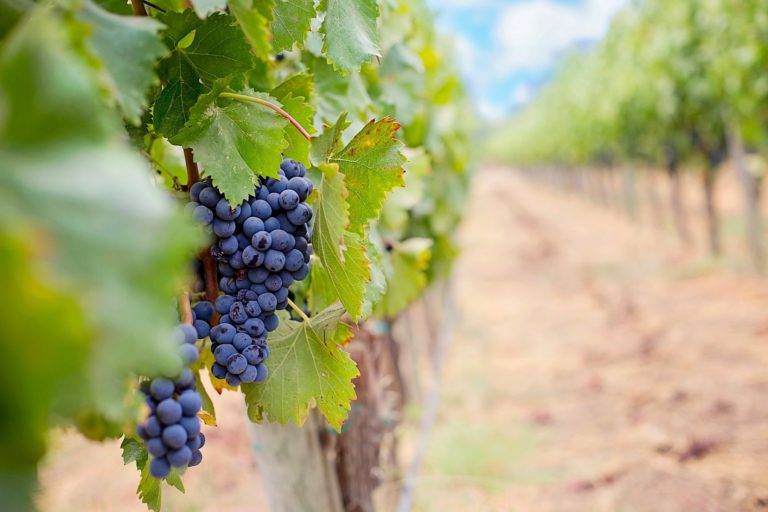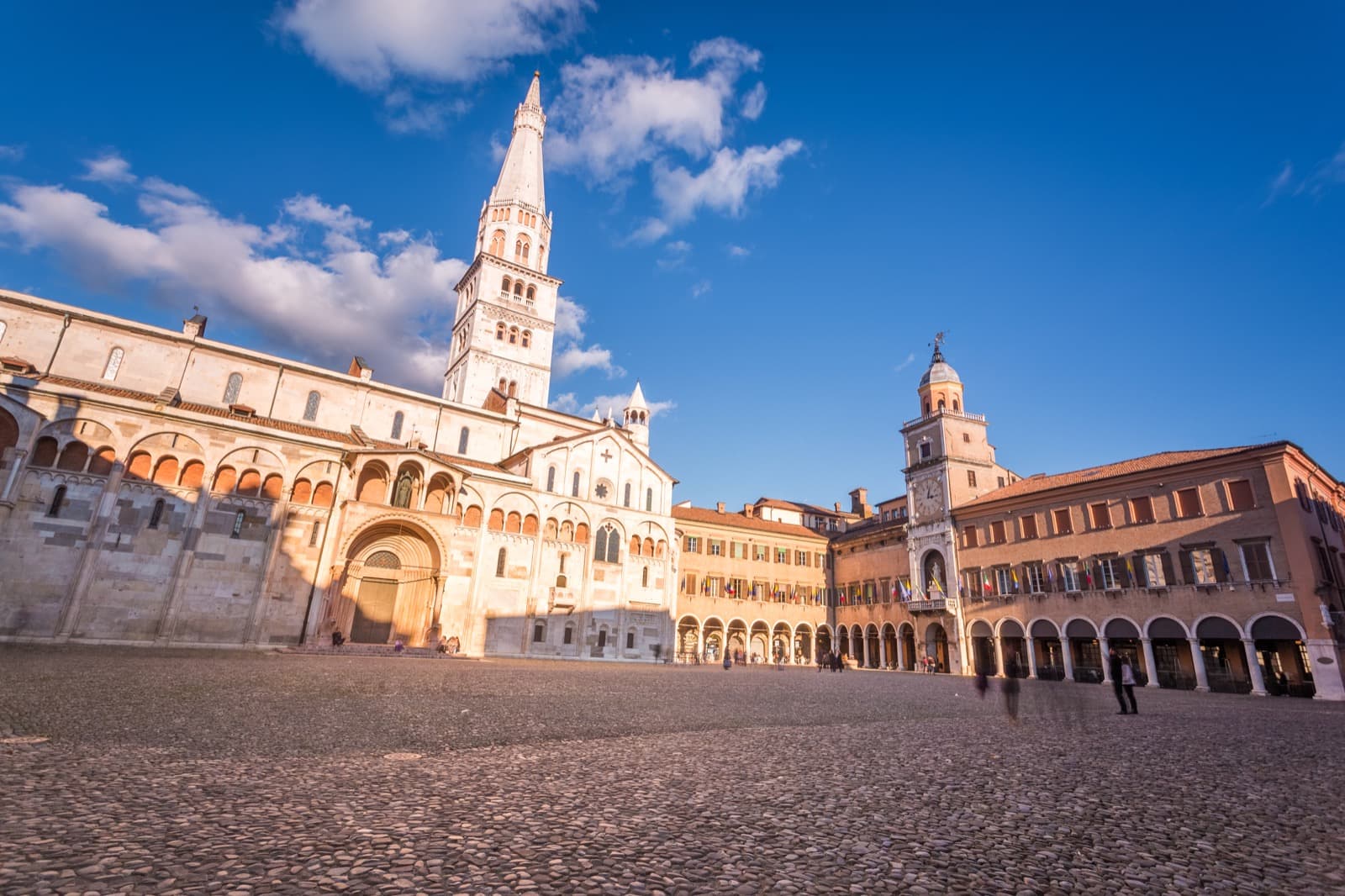Surrounded by rolling hills full of vineyards, oaks and fruit trees, a small, pretty village, which has become part of the Authentic Villages of Italy, rises a few km from Vignola.
We’re talking about Savignano sul Panaro, in the Modena hinterland: land of ancient stories and excellent food.
Savignano sul Panaro | Ph. @rimmo85hd via TerrediCastelli
Savignano sul Panaro | Ph. @tania_bertoni via TerrediCastelli
Savignano sul Panaro | Ph. Nacchio’s Brothers via TerrediCastelli
Savignano sul Panaro via TerrediCastelli
History
Savignano sul Panaro boasts very ancient origins: numerous relics found in local settlements and necropolises testify human settlements dating back to the Etruscan era, but the territory was inhabited since prehistoric times.
In fact, in the second half of the nineteenth century some finds dating back to prehistoric times were found, in particular the remains of the skeleton of a Pliocene elephant and a statuette of Venus dating back to the Upper Paleolithic.
The Elephant was found in the autumn of 1980 in the Bocchirolo area, north-east of Savignano, and today it is kept in the Elephant Museum at the local Civic Center.
Venus, a small 22.5 cm sculpture dating back to 25,000 years ago and carved in a hard yellow / serpentine green stone, was found in 1925 in the Prà Martin locality, in the hamlet of Mulino di Savignano sul Panaro, and today it’s preserved at the Pigorini Museum in Rome.
Taking a leap to a more recent era, the village was first owned by Matilde di Canossa then, between 1400 and the first half of 1500, by the Contrari Family, before following the same fate as Vignola ending up under the control of the Boncompagni in 1577.
What to see
A visit to Savignano sul Panaro certainly starts from the upper part of the town, the medieval one characterized by the Castle, accessible by Via Crespellani, a road paved with river pebbles that winds through the village.
Among the ancient houses, now renovated, some towers stand out, such as the ancient Torre della Guardia of the second vault, which constitutes the access to the safest part of the Castle, and the Torre del Cappellano, to guard the ancient city walls.
Among the places not to be missed in the historic center we also recommend:
- the Church of Santa Maria Assunta, of medieval origin but rebuilt in the 1700s, consisting of a single nave with a barrel vault and crossed by five chapels, with valuable paintings and decorative works;
- the Oratory of San Rocco, built to ward off the plague of 1631;
- the “Casa di Matilde”, a building in which, according to the legend, Matilde di Canossa used to stay;
- the “Casa del Capitano” or “Casa del Vescovo” which has traces of frescoes, including the coat of arms of the Contrari Family, the family that conquered the lordship of Savignano in 1409 (the story is remembered every year during the historic event “La Fight for the Sword of the Contraries “).
Other places worth visiting are:
- the Elephant Museum, which houses the remains of the skeleton of a Pliocene elephant who lived about 2 million years ago and was found in the riverbed of the Panaro river in 1980;
- the Museum of Venus of Savignano;
- the Rediscovered Mosaic, a polychrome mosaic that decorated the environment of a rich country house from the beginning of the 5th century AD, found in 1897 by the local historian Arsenio Crespellani along the ancient Via Claudia near Savignano sul Panaro and which can be admired today at the birthplace of Giuseppe Graziosi, in the nearby town of Mulino;
- the sculptures of Giuseppe Graziosi, a famous local sculptor, and in particular: the Lamentation over the Dead Christ inside the Parish Church of Santa Maria Assunta, the bronze statue of the Redeemer at the family tomb, a monument to the fallen of the First World War in the space in front of the cemetery.
What to do
In addition to the visit to the historic center already mentioned, there are many green itineraries that develop around Savignano sul Panaro, which can be traveled on foot or by bicycle throughout the year.
Among these itineraries we mention the 3 nature trails: Mostino route, the Monticelli-Montebudello route and the Acqua Fredda route.
The Via delle Querce is instead an interesting hilly area that flanks the Bazzanese state road to the south-east and hides a luxuriant concentration of gigantic oaks, so that some specimens can be considered real monuments.
Parco dei Sassi di Roccamalatina | Ph. Nacchio’s Brothers via TerrediCastelli
Not far, the Parco dei Sassi di Roccamalatina, with its imposing pinnacles, offers numerous itineraries in the nature.
Nearby there is also the historic center of Vignola, with its fortress, the spiral staircase of the famous local architect Jacopo Barozzi in the Palazzo Contrari-Boncompagni and the municipal Acetaia for the production of traditional Balmasic Vinegar.
Events
Here is a list of the main events that take place every year in Savignano sul Panaro:
- in May “Un grande prato d’erbe“, festival of aromatic and officinal herbs, with display of natural and organic products and themed gastronomy;
- on the third Sunday of May the diurnal Magnalonga, which offers the opportunity to taste the local DOC wines and taste some of the typical specialties walking along the hills;
- in July the nocturnal Magnalonga, a suggestive walk under the stars with food and wine stages enlivened by musical entertainment;
- in June the cartoon festival “Betty B“;
- the third weekend of September the historical re-enactment of the sixteenth-century “Fight for the Sword of the Contraries“;
- the last weekend of November the “Medieval markets“, with the display of cribs, itinerant shows, concerts and tastings.
Food & Wine
Savignano sul Panaro boasts a strong agricultural vocation, also due to the fact that the territory is included in the prestigious Consortia for the protection of Parmigiano Reggiano, Prosciutto di Modena and Ciliegia di Vignola.
Here the typical mountain dishes, such as crescentine and borlenghi, mix with the traditions of the pianura, such as the Traditional Balsamic Vinegar of Modena and the Nocino liquor.
Crescentine via TerrediCastelli
Tortellini in brodo Ph. Nacchio's Brothers via TerrediCastelli
Ciliegie via TerrediCastelli
But Savignano is also famous for its wine production, knows already in the first centuries of the year 1000, as evidenced by the numerous requests for “bruschetto” wine from Savignano by bishops, abbots and Matilde di Canossa herself; currently there are 11 vines grown in the area, all recognized with DOC certification.
The [Emilia Romagna Villages] section is dedicated to Villages that are part of the Associations Borghi più belli d’Italia, Bandiere Arancioni del Touring Club & Borghi autentici d’Italia.
Author
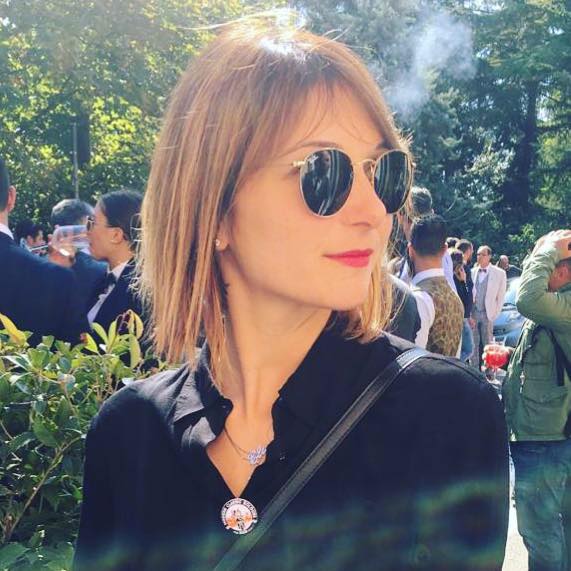
Elisa Mazzini
Social Media Manager for @inEmiliaRomagna and full-time mom.
You may also like
Castelvetro di Modena, from towers to vineyards
by Elisa Mazzini /// May 18, 2017
The most beautiful Italian Villages in Emilia-Romagna
by Elisa Mazzini /// November 26, 2024

Interested in our newsletter?
Every first of the month, an email (in Italian) with selected contents and upcoming events.
The Natural Protected Areas of Emilia Romagna
by Elisa Mazzini /// July 13, 2020
